The Distance Ladder: Going Multi-Day
A practical guide for taking your long single-day rides and learning to repeat them day-in and day-out.
This newsletter is going to build on last week’s guide to stretching from a beginner cyclist to riding your first imperial century. And while I’ll still call this “The Distance Ladder,” in truth the metaphor starts to break down a bit.
For one, as I mentioned at the end of last week, the ladder starts to fork at a certain point. This fork is about riding back to back two, five, ten days in a row. But there’s another fork that’s all about seeing how much distance you can cram into a single 24 hour (or sometimes even longer) period without pausing for an extended stop/sleep.
But the other way in which the ladder metaphor starts to break down is that you don’t need to have achieved the top rung of that ladder (Branch of a ladder? quantum-entangled parallel ladder? Like I said…) in order to start thinking about the next step here.
This ladder is going to look pretty different from the previous one, because it’s almost more about stylistic variance than it is about actual distance progression. Or at least, that’s mostly the case.
This distance ladder is more about self-reliance, and eventually having that carry into going further or faster. That said, any advice about taking fewer breaks and covering more mileage in a day is mostly going to be the purview of the next newsletter even though it will apply back to this one.
That makes the multi-day distance ladder look something like this:
First Rung: Basecamp
Second rung: Hotel Touring
Third Rung: Bikepacking
Fourth Rung: Minimalist Bikepacking
A further differentiator about this ladder is that, maybe even more than riding a particular distance, this comes down to preference. That’s because it’s about stylistic variance. The part that makes it a ladder is about the difficulty of each rung, and the increasing amount of specialized skills and experience needed.
So let’s dig into it.
First Rung: Basecamp
In a very real way, you could think about this rung as starting from riding multiple days from your own front door. After all, the best way to start riding multiple days in a row…is to start riding multiple days in a row.
But the spirit of this rung, and much of the fun that comes from it, is in traveling to a place to ride. This rung is essentially a bike vacation! Are there new roads to explore that are outside your normal reach? A mountainous region when you live in the flat plains? There is a special joy in exhausting yourself while being somewhere new. If there was already a lot of pleasure to be had in getting to know the area right around you, there certainly is pleasure in seeing somewhere new from your saddle.
Let’s go back to that “exhausting yourself” phrase for a second. I’m not suggesting you push yourself beyond your realistic limits, but I am suggesting you might push yourself beyond your norms. Is a 100km ride normal for you? I bet you don’t usually ride 80-100km three days in a row. Whatever distance constitutes a “normal medium-hard ride,” plotting a few routes that each cover that distance, all while seeing new roads every time, can be a good step outside your comfort zone.
I do think it’s important that you cover as many different routes as you can when you’re doing this. One of the things that can help keep you going when you’re tired is the joy of discovery. If you always have something new to look at, you will always be looking forward to finding what’s next.
A few other practical considerations:
Hotels are fine, but they usually have less space for you to store your bikes and maintain them day-to-day if you need to do any work on them. Rental properties, cabins, or campgrounds (provided you have camping gear) are usually better options.
Indulge in food. Riding your bike should be fun, and if you bonk by the second or third day you’re going to stop having fun. If you’re used to doing single day rides at or under 160km, there’s a limit to how much you’ve had to think about nutrition, even on those longer rides. Said a little differently, as long as you don’t eat so little that you bonk, you can run a fairly extreme calorie deficit for a day without feeling horrible. But doing that over multiple days magnifies the effect. Lean into the vacation vibes with big breakfasts and big dinners. Unless you’re only doing a few dozen kilometers per day (which, for the record, is totally fine), you’re probably still not going to be able to replace all the calories you burned.
Treat each individual ride like you normally would a ride that distance. Make a route to a local landmark! Stop midway for a cafe! I think I’ve said something to this effect three or four times already in this newsletter, but do the things that make you love riding your bike even when you’re pushing yourself to a new limit by riding multiple days in a row.
Start with a three day trip. Long weekends are easy to find throughout the year, and if you aren’t used to riding more than a few times per week, three days in a row is going to feel like a lot by the third day. Maybe make that last route a little shorter, too. If you’re feeling good after doing a three day trip, then you can think about whether you want to extend the next time.
I did this a few times before I ever reached for the second rung of this ladder. For example, in 2018 I went with a couple friends to the area around Lake Garda in northern Italy…
…and in spring of 2019, my partner and I rode a few days in and around Maribor, Slovenia.
Funny story about that one: We were there one week before the UCI Downhill World Cup was in town, and we were staying (unintentionally) at a hotel right next to the bike park. Our road bikes looked pretty comical in the hotel bike locker next to a bunch of big, burly downhill bikes.
Second Rung: Hotel Touring
Sometimes called “credit card touring,” this is the second rung because it takes all the principles of the Basecamp rung and simply stretches it out geographically, with a minimal investment in additional equipment.
Reaching this rung was the beginning of my obsession with long distance cycling, but it started from a place that can barely be described as “riding a long distance.”
In the fall of 2019, building on our Basecamp riding trip to Slovenia, my partner and I spent a week riding through the Dordogne river valley in central-southwestern France. The longest day we did on that trip was 80km; we averaged about 60km a day over seven days, including some “rest days” where we just made 20km transits from one town to another.
But in the process, we got to see an entire region! We spent a week on our bikes!
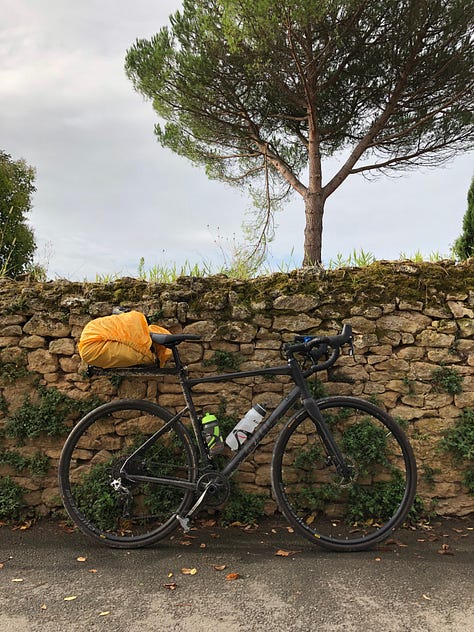
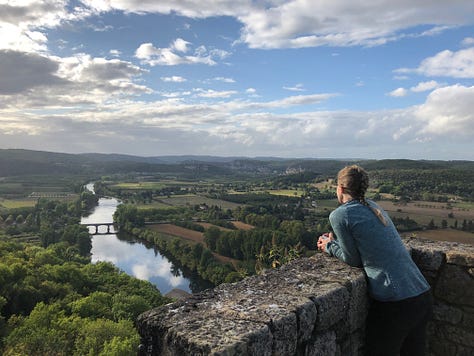
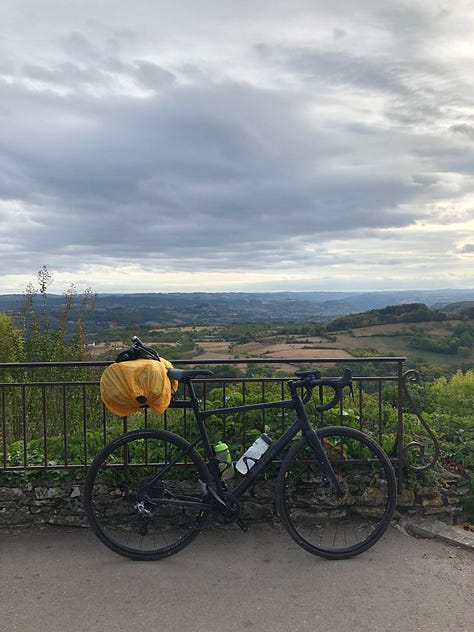
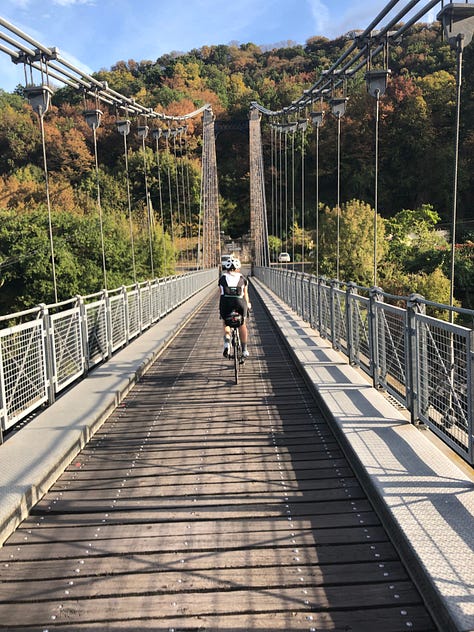
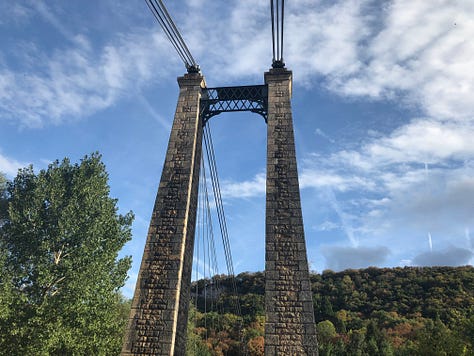

Deciding to ride in this fashion is such a particular mindset, one that says, “I want to enjoy the journey as much as each destination.” Maybe that works for you, maybe it doesn’t, but it’s achievable whether your daily rides are 20km or 120km. Bring over those ideas of pushing yourself a little - whatever that means to you - from the Basecamp rung.
And take notice of these practical considerations.
Your equipment doesn’t need to be fancy, but it is worth thinking through. A big part is that, just like commuting by bike, throwing everything you need into a backpack is probably going to degrade your experience to an uncomfortable degree. My first trip - that one through France - we packed everything we needed into a small duffel bungee corded down onto a VERY cheap rear rack (on my bike) plus a small cycling rear pack (on my partner’s bike). It made my bike tail heavy and seriously affected the handling, but it worked, and it cost about $60 all in, including buying the pack for her bike.
If you can spend a little bit more money, however, it can have a meaningful effect. For starters, using both a handlebar bag and a saddle pack will distribute the weight more evenly across your bike, making the handling closer to normal. For Hotel Touring, you can usually get away with just this much cargo space, or perhaps this plus a small frame wedge or top tube bag. Panniers on a rear rack are also an excellent option for additional packing volume.
Regardless of how much space you have, though, remember that you’ll be carrying all that weight with you. Limit to as few clothes as you can. Plan to wash clothes (especially cycling clothes) in the hotel shower. A luxury item like a book or journal is often worthwhile, but they still take up space. Weight matters, but volume is more often the limiting factor.About washing those clothes: if you bring two sets of cycling kit, the idea is that you’ll always have a clean set for the next day. But even if you only bring one, be sure to wash it each night. It will make a huge difference to the health of your bum and the general smelliness of your person.
Of course, if you’re washing clothes in a hotel shower, you’re probably also going to have to air dry them. Here’s where a VERY important trick comes in.When you’re done washing your clothes, wring them out as best you can. But you’re not done yet. Next, take an extra towel and lay it out flat. Then lay your damp clothes on top of the towel. Then roll up the towel-plus-clothes so that you have a sort of cinnamon roll, with a layer of towel separating each layer of clothes, and wring the whole thing out together. The towel will help pull extra moisture out of your clothes when you do this, so now when you hang them up to dry overnight, they’ll be much more likely to actually be dry in the morning.
The following bit of advice specifically doesn’t apply to US chains, where you have an expectation of wide halls and space in your room, and it’s better to ask forgiveness (should anyone say anything, which is unlikely) than permission.
But for everywhere else, meaning boutique hotels, B&Bs, or other types of rental properties, it’s usually a good idea to let them know in advance that you’re going to be arriving by bike and ask about storage. Many of these smaller places don’t want you rolling a dirty bike through their nice interior, but they’ll also likely have a storage area of some kind. Sometimes this will be a locked closet, sometimes it may be a security-monitored corner of their parking space. You want to take a decent lock with you anyways, but work with your accommodation to find a space that’s locked, monitored, and/or out of sight and reach of the public on the street.A related note for all accommodations is to double-check all check-in and check-out times. The smaller a town and more mom-and-pop the place you’re staying, the more likely it is you’re going to need to plan around their schedule. That might mean getting out early enough in the day that you arrive before their front desk closes. Or it might mean that you need a circuitous enough route to ensure you don’t arrive before check-in starts.
Get off the beaten path as much as possible. (Metaphorically. An extended chunky gravel section on a road bike isn’t fun, either.) Since you likely don’t know the area you’re travelling through well, make use of tools such as bike routes, heat maps, and satellite imagery to look for the back way. It’s likely to be prettier anyways.
There absolutely will be times that you need to change your route, so be flexible. I’ve had a route try to send me over a steep gravel peak because it was half a kilometer shorter than following the nice, paved road that went around the hill. I’ve also had a nice gravel path that I meant to be on descend into bushwhacking single track, and the only way out was through. Don’t get mentally stuck on a precise plan. There’s always another way to get where you’re going, even if it adds an extra hour you weren’t planning on. If it happens, you’ve got a great story to tell.
Like other rungs of this ladder, credit card touring scales with you to as much distance as you want to go. I’ve done trips of just a few days riding only three or four hours a day, and I’ve done trips almost two weeks long where I rode over 100km a day. Do what seems exciting (and maybe just a tiny bit scary) to you.
Third Rung: Bikepacking
Debate the difference between “bikepacking” and “bike touring” all you want. Here, the only distinction I’m trying to draw between this rung and the previous one is the amount of gear you need to take with you and your expectation for how and where you’ll be sleeping.
More specifically, on this rung of the distance ladder I mean that you are bringing a tent (or hammock, or bivvy) and other sleep necessities with you, and that your intention is to camp outside. That could mean in the backcountry wilderness, bringing a stove to cook dehydrated meals. That could equally mean a developed campground, and eating sandwiches you picked up from the grocery store before you arrived.
In either case, your bike is almost certain to be heavier than on the Hotel Touring rung, because you’re being more self-sufficient. And that’s what puts this on the rung above relying on hotels.
Camping is not everyone’s cup of tea. It is a particular kind of experience, and it intentionally foregoes many luxuries along the way. Personally, I love it.
Another gate to entry can be the expense of the equipment required. Yes, there are a number of additional things, plus the bags to carry them on your bike, that you might need to buy. On the other hand, how much were the hotels you would have booked for a trip versus the cost of the reusable tent, sleeping bag, etc. you now own and can use again in the future?
I’m not going to go into specific gear recommendations here (that’s a post for another day), but here are some strategies to keep in mind for a successful first bikepacking trip.
Give things a try first. If you know that you love camping, great. If not, don’t invest in all the things you need before you give it a shot. Go with a friend who can help supply you. Find a local gear library and rent some equipment for the weekend. Even if you don’t have the necessary pieces to fit it all on your bike, go car camping, keeping your pack list as minimal as possible to mimic what you’d be able to carry on your bike.
When you are ready to buy gear, spend a little extra to get things that pack small. I don’t mean a crazy amount - there are some truly absurdly priced pieces of ultralight equipment out there. But weight is not as important as pack size. Bikepacking.com is also a great resource for finding camping gear and bike bags that look like they’ll work for your needs.
Start at state/national parks. They have more infrastructure and will make things easier (and less scary) for you. Even better: Find a local group that can help you out your first time.
Often, bikepacking is going to spur you to start pushing daily distances, too. Some of this comes from the inherent remote-ness of most campgrounds and campsites, but I think the self-sufficiency demanded by bikepacking goes hand-in-hand with an adventure mentality. It’s hard not to think, “Where can I get to now?” when you aren’t as reliant on cities and services.
Fourth Rung: Minimalist Bikepacking
This is generally the purview of racers, and therefore is a component of your ability to go very far each day and keep moving quickly. If you’re not racing - and you do not need to be racing - you should pretty much ignore this rung and focus on making bikepacking as fun as possible. In time you can absolutely dial a bikepacking setup that has very little to do with going fast but nonetheless has no wasted space.
In some ways, minimalist bikepacking actually gives back the self-sufficiency you gain from the previous rung. While enjoying a race requires focusing on the journey, not just the destination, the point of minimalist bikepacking is generally to deliver you to that destination as quickly as possible. Depending on the race, you might not be carrying a stove or very much food. To keep both weight and stop time to a minimum, there’s a much more ruthless calculation involved about the time and calories needed to make it as far as possible before the next resupply.
It’s also true that minimalist bikepacking sort of reconnects to the subject of next week’s newsletter - how to really stretch those single day distances. In going minimalist there’s an assumption that you’re going long each day. Not long just by your own standards, but long, period.
So if this is you, if there’s a challenge or a race that you want to approach in this way, here are a few things to help you reach this rung of the distance ladder.
Be comfortable being a little uncomfortable. Going minimalist means sacrificing the luxuries. I don’t bring a camp chair when I’m racing because I shouldn’t have time to sit around camp. I love my tent and am much more comfortable in it, but it can’t compare to the small space my bivvy takes up in my bag or the speed with which it goes up and down. All that said, I’m still able to sleep in my bivvy, and it would be useless if I couldn’t
Know your gear. You should have no questions about how to use something or where it’s stored. You need to be ready to use your gear with minimal thought, because you’re probably going to be exceptionally tired from successive long days of riding. Plus, going minimalist means you need to know what you need with you, not what someone else considers essential. I won’t go without an inflatable pillow, even in a minimalist setting; others might be ok bunching up a jacket under their head. Does your exact assortment of tools accomplish your needs?
Practice stealth camping. I am not telling you to break the law, but if you’re going minimalist and going far, there’s a very good chance you won’t have an official campground available right at the spot you need it. Can you go to sleep inside a post office? Beside a bike trail? Behind a barn? Can you see what you’re doing well enough to get in and out quickly in the dark? Do you have a plan you can action?
By its nature, minimalist bikepacking is doing without - and doing ok anyways. This takes practice, both at the Bikepacking rung of the ladder and this one.
All that said: racing can be great. It can show you just how far you can push your own body, how much more you are capable of than you thought. I love to go bikepacking for fun, but for the last several years I have always had at least one race or adventure to push me in this very particular way, and that is incredibly satisfying.
It’s Time for an Adventure
This is my favorite branch of the distance ladder. I climbed the ladder from last week over a number of years, and during that same time I climbed the first two rungs of this one. The third and fourth rungs have been recent achievements - just since 2021. I mentioned buying camping gear rather than booking hotels earlier because that’s exactly what I did that year. We were going camping with my in-laws, and I figured I could make a little trip out of it to get there by bike over a few days instead of by car. It absolutely launched me into this world, and the world of ultradistance with it.
So what about you? Is this branch of the distance ladder intriguing? Are there questions you still have? Stories of how you climbed? I want to hear them! Let me know in the comments, and make sure you’re subscribed so you don’t miss next week’s newsletter, when we cover the parallel branch of the distance ladder: going long on a single day.




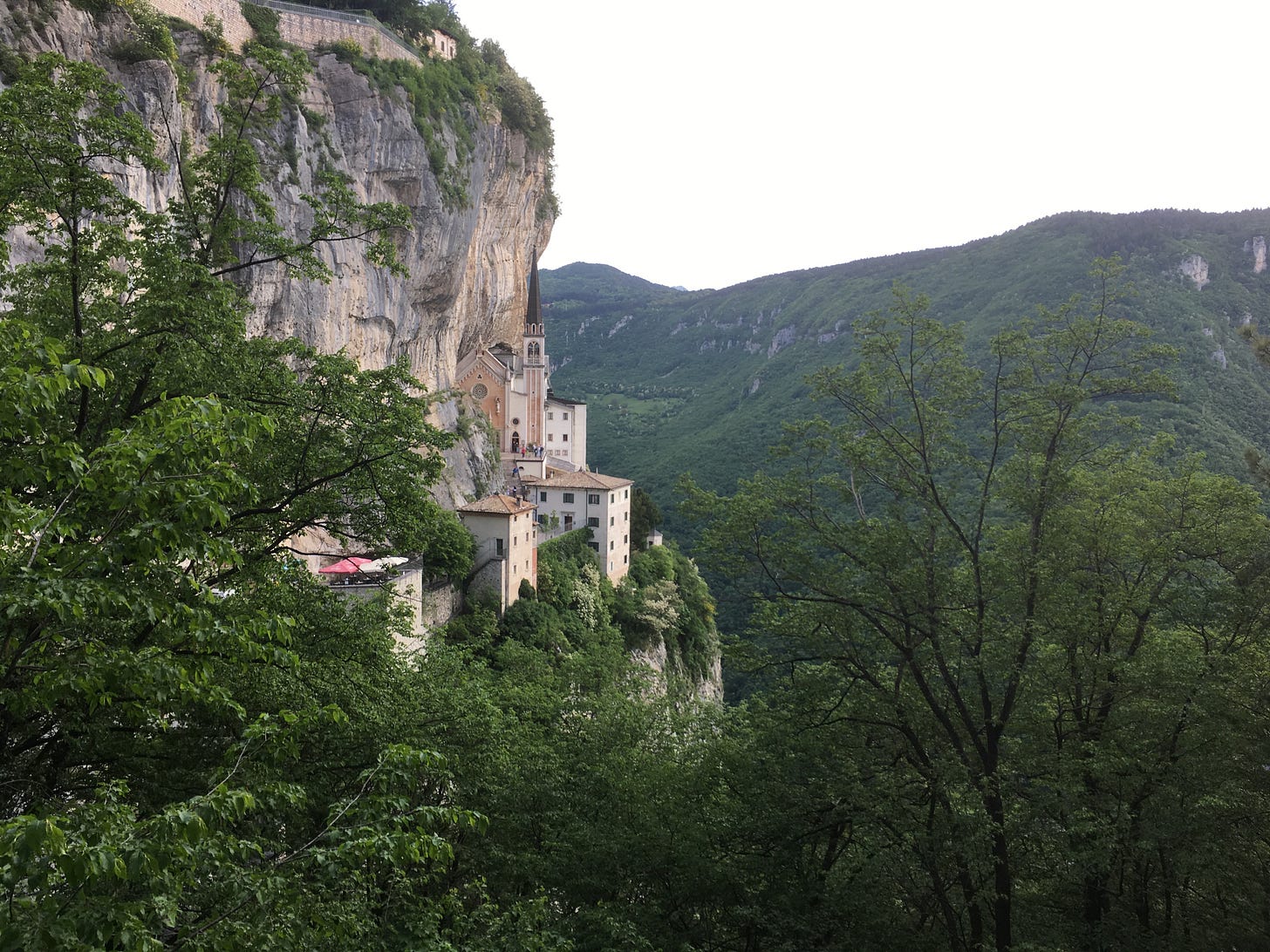
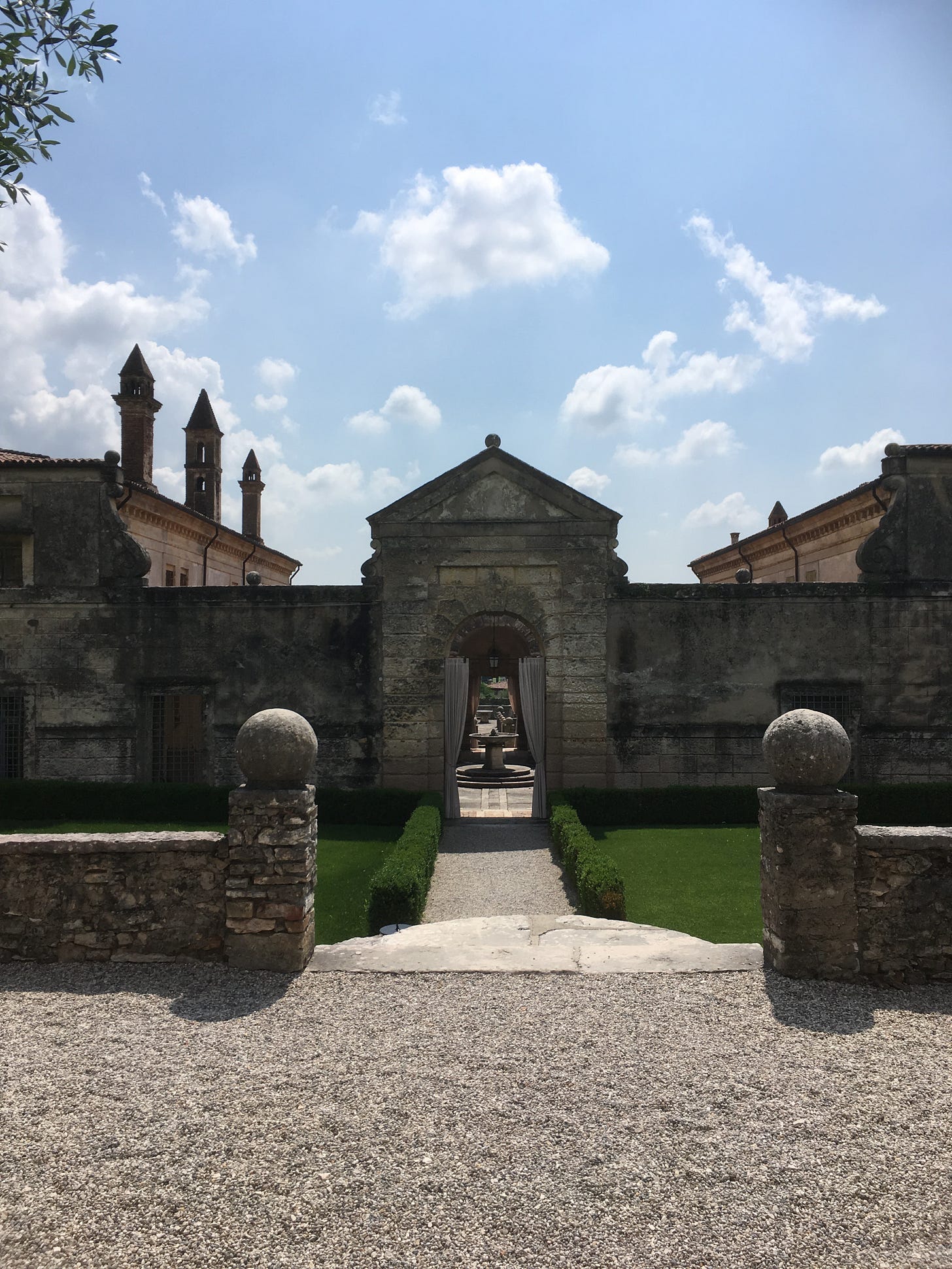
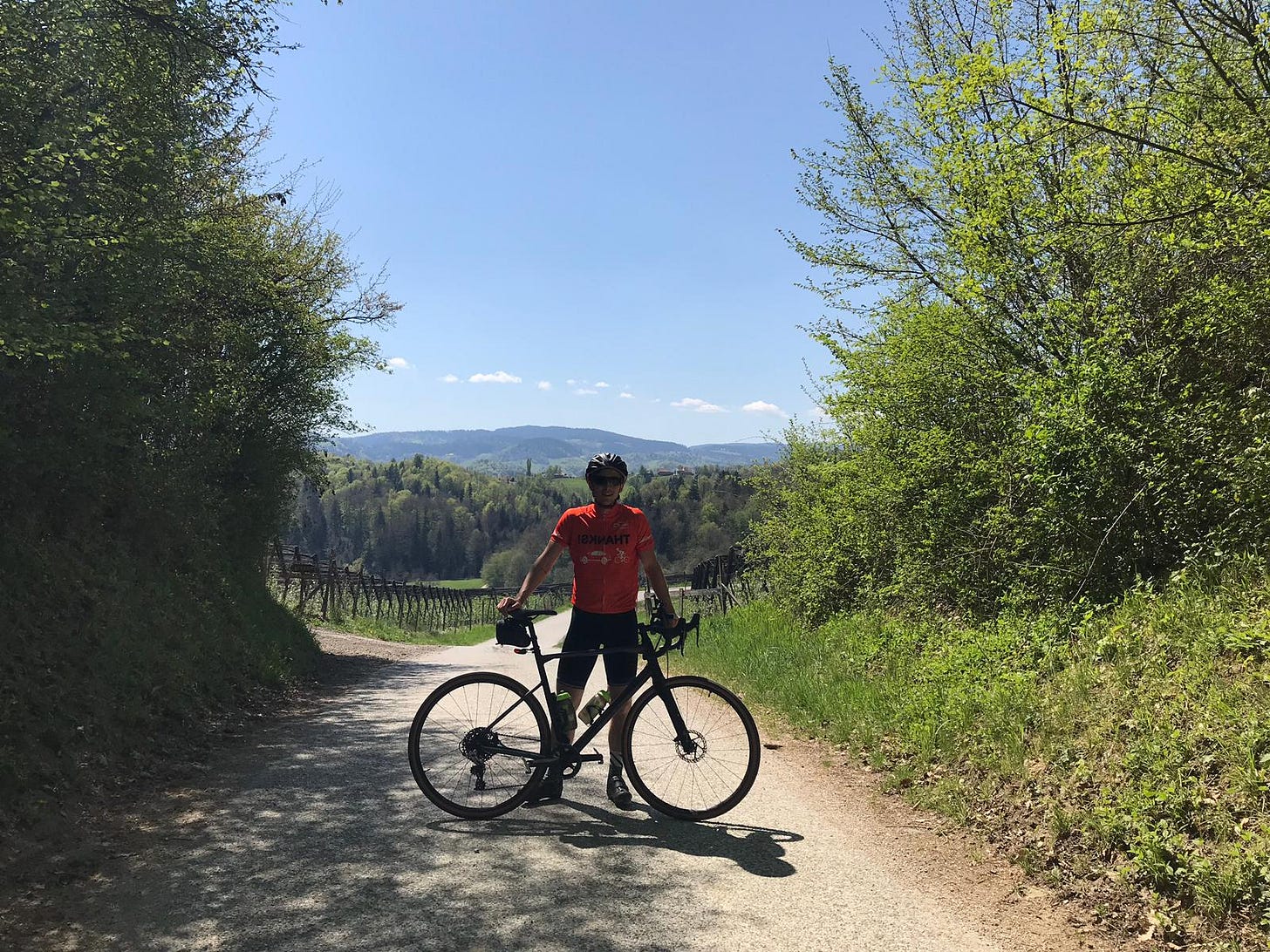
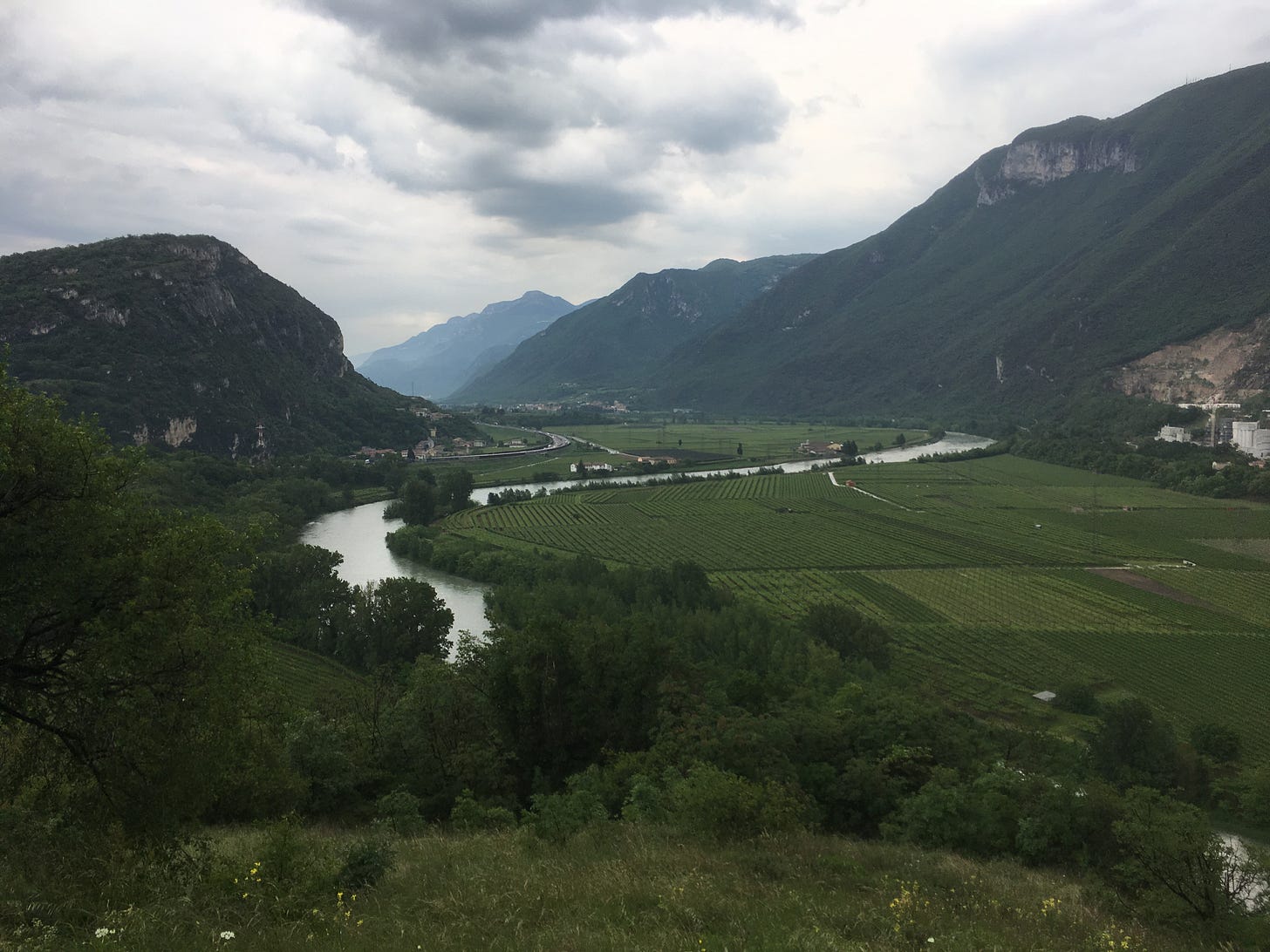
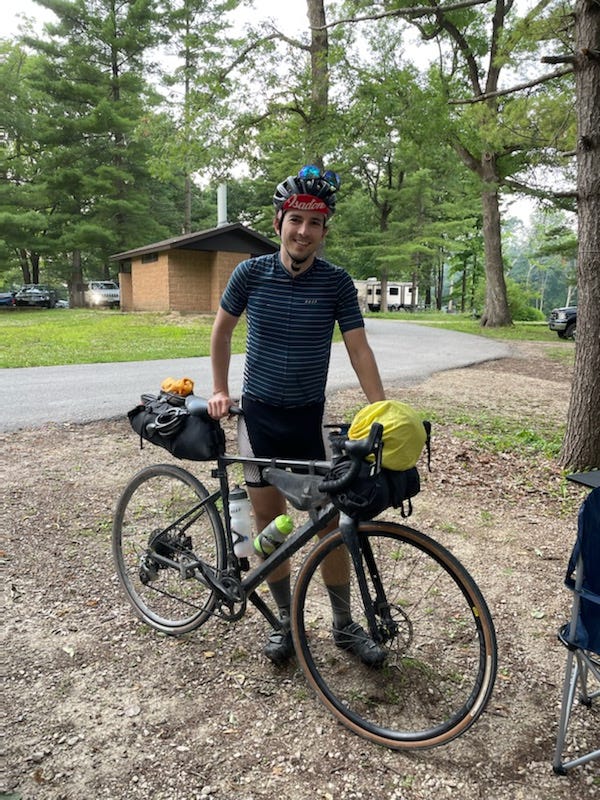

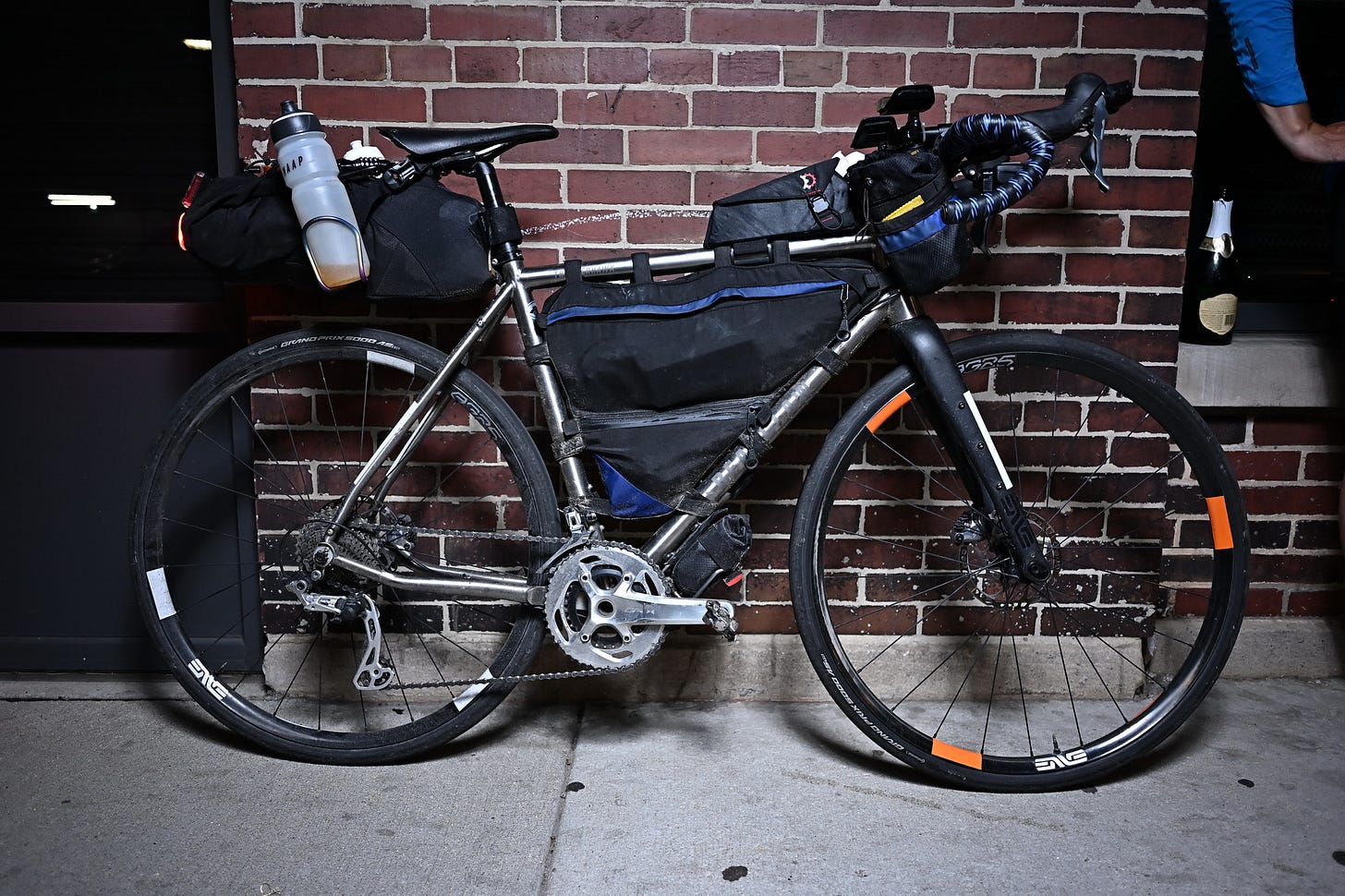
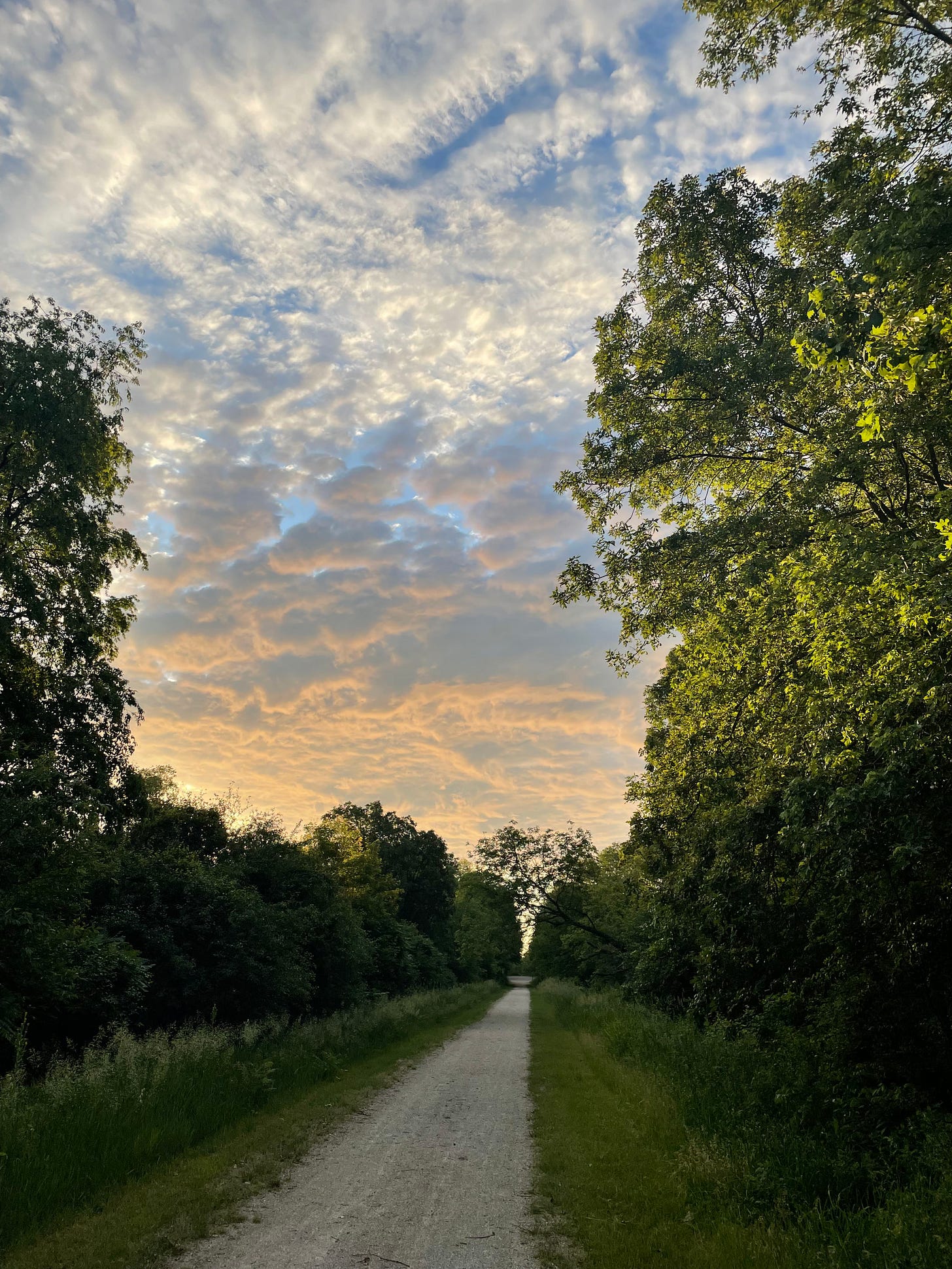
Hey Tim, just wanted to say thanks for all your posts - been following for a while. This year I signed up for my first ever ultra-distance event (Mini-Gami!) and am looking forward to it. I've only ever done century rides in the past so this will be a stretch for me (especially trying to make it to the overnight ferry in Manitowoc in one day!). I won't be racing it, I just hope to finish. Your posts have been really helpful - thanks! Good luck with all your goals this year, and I look forward to more posts.